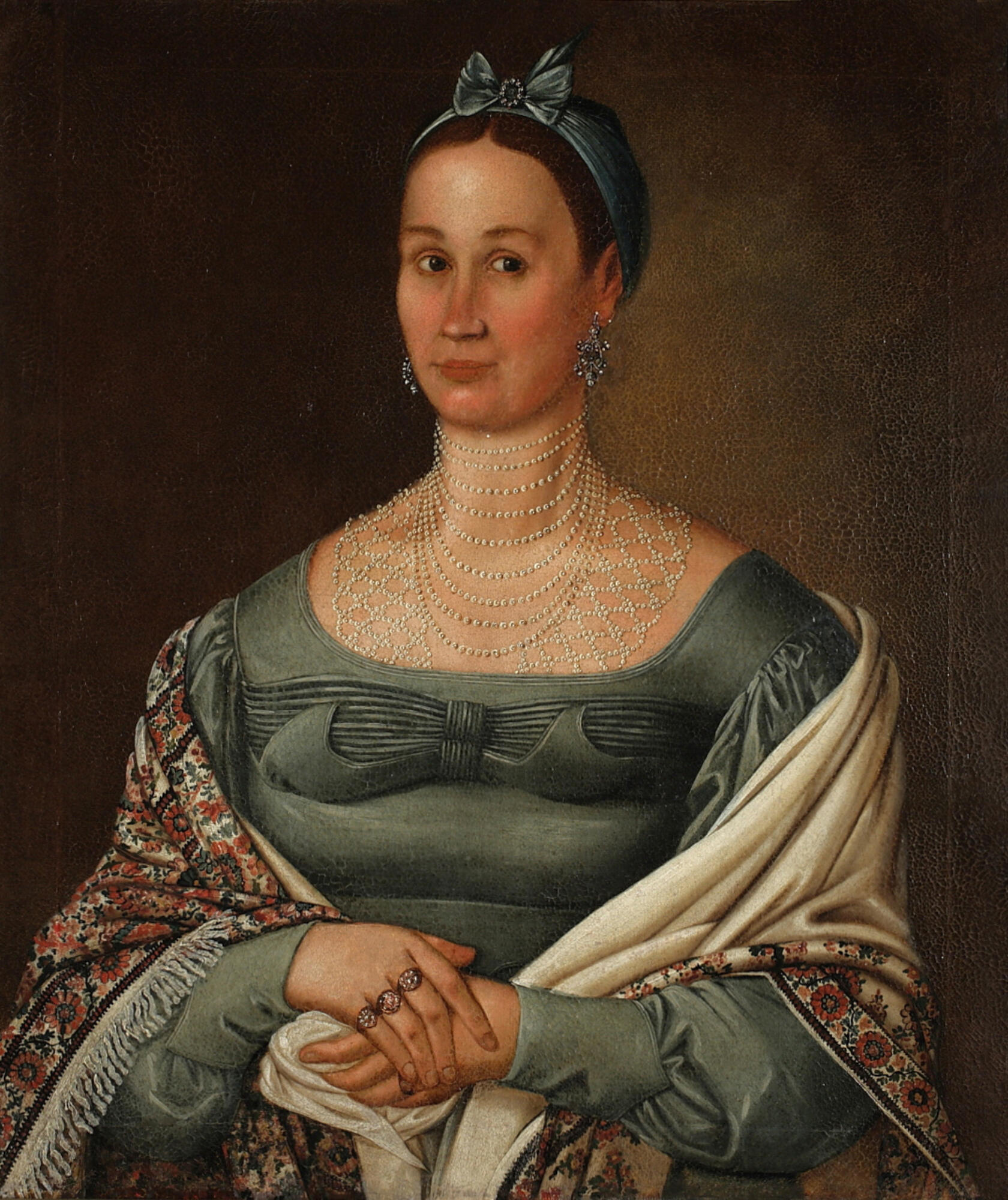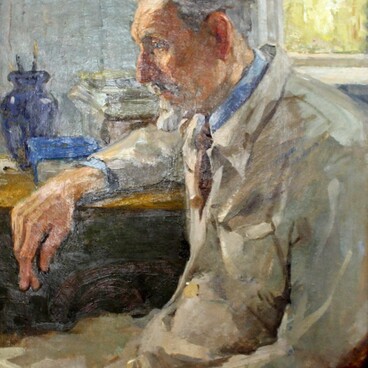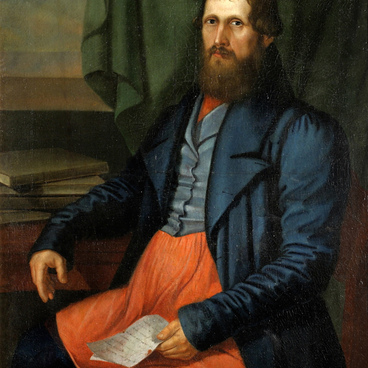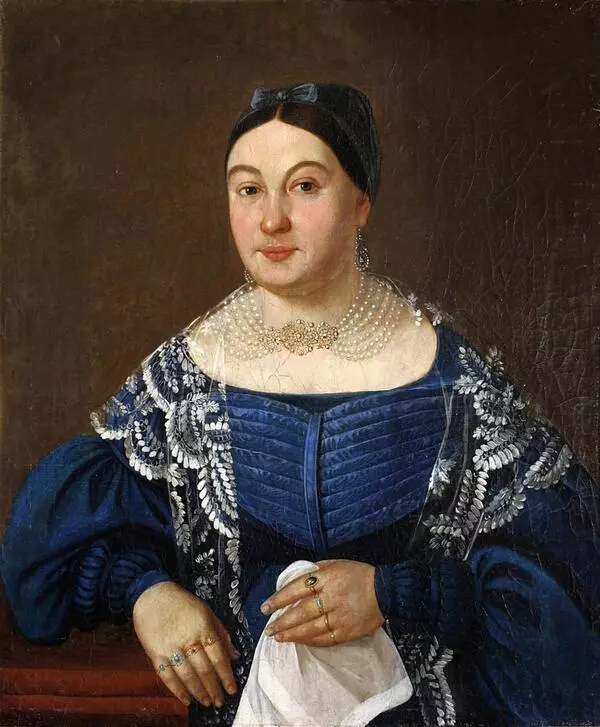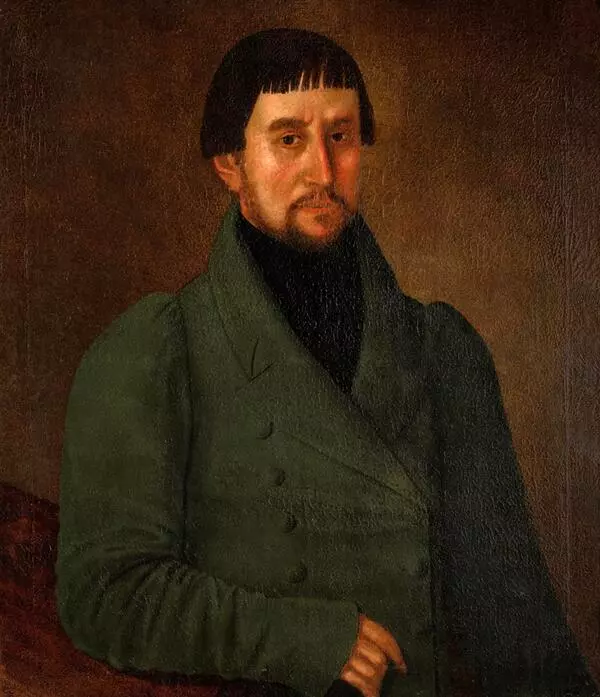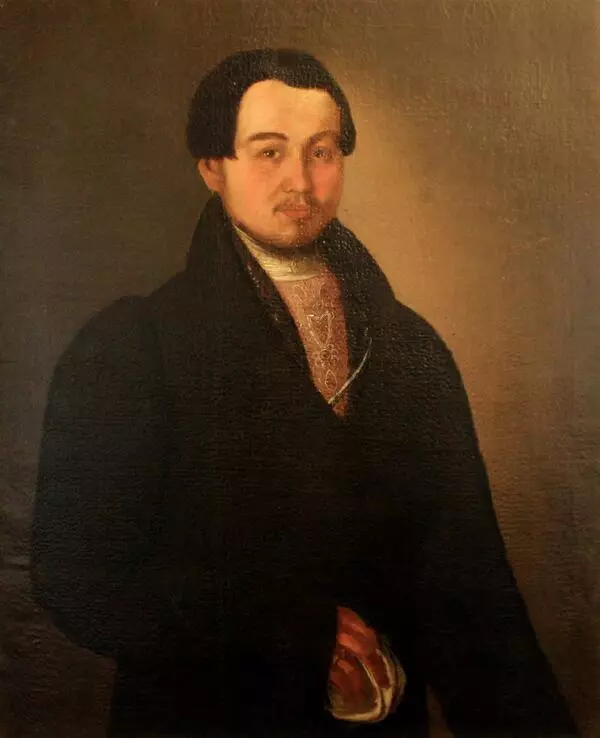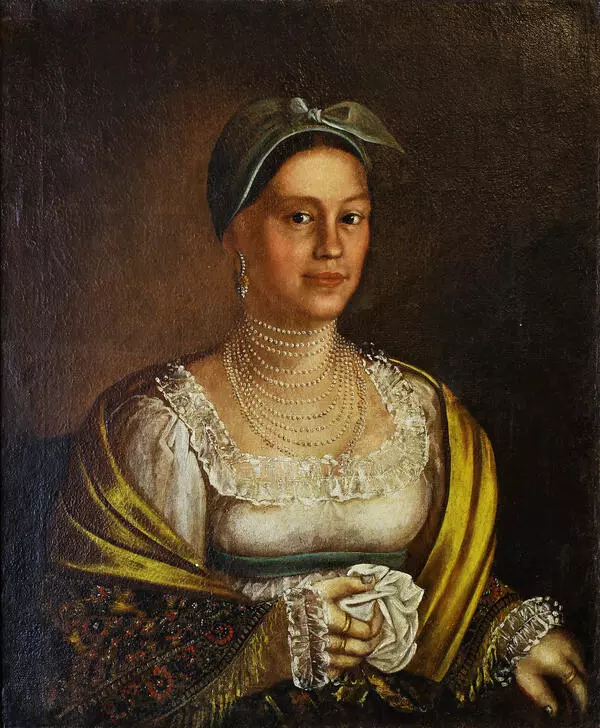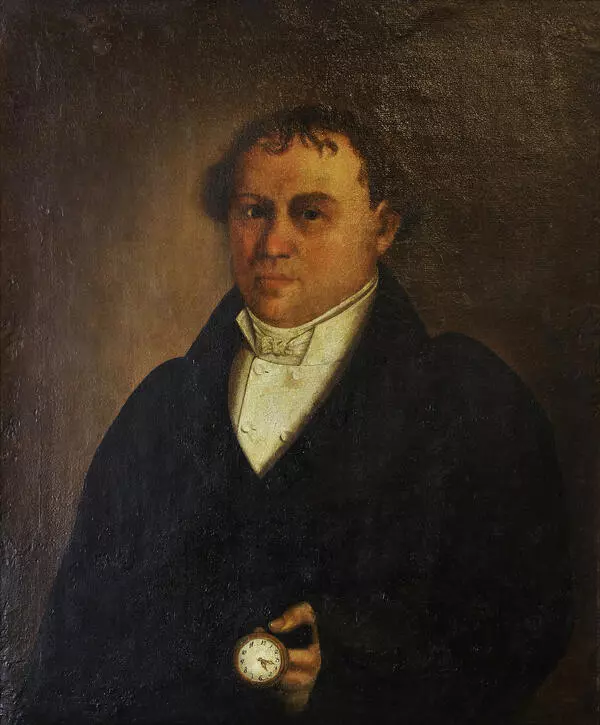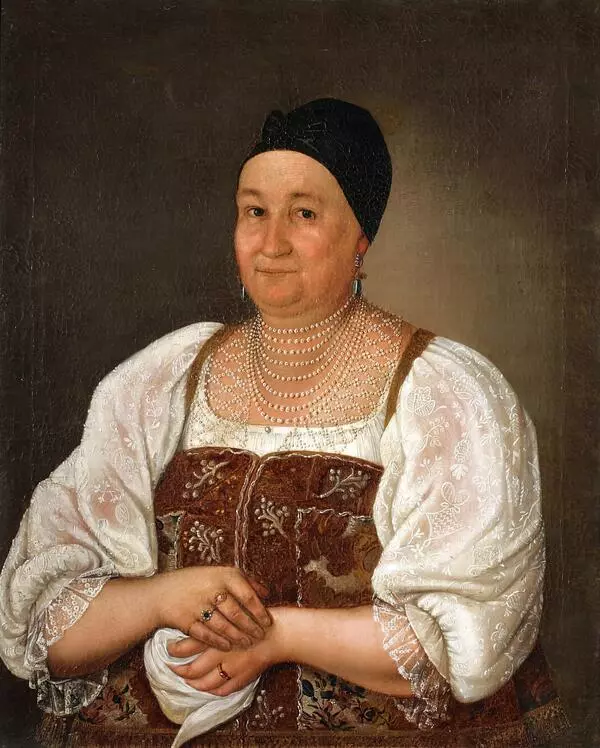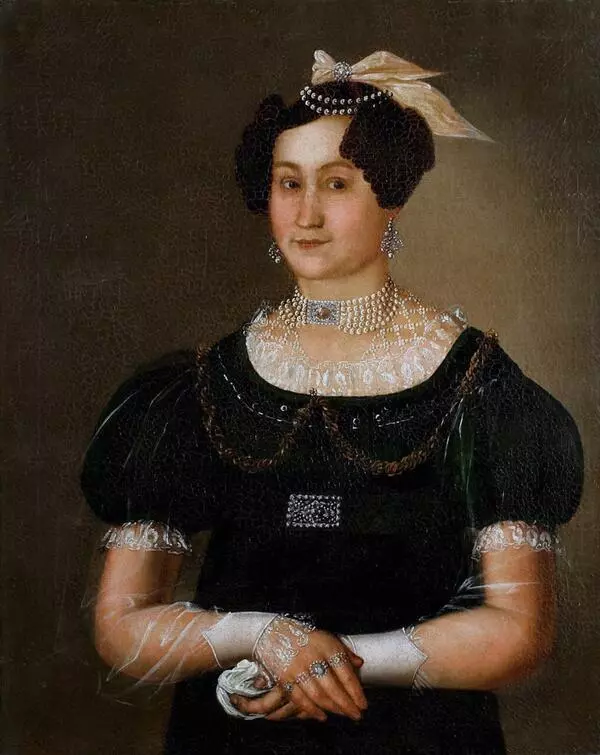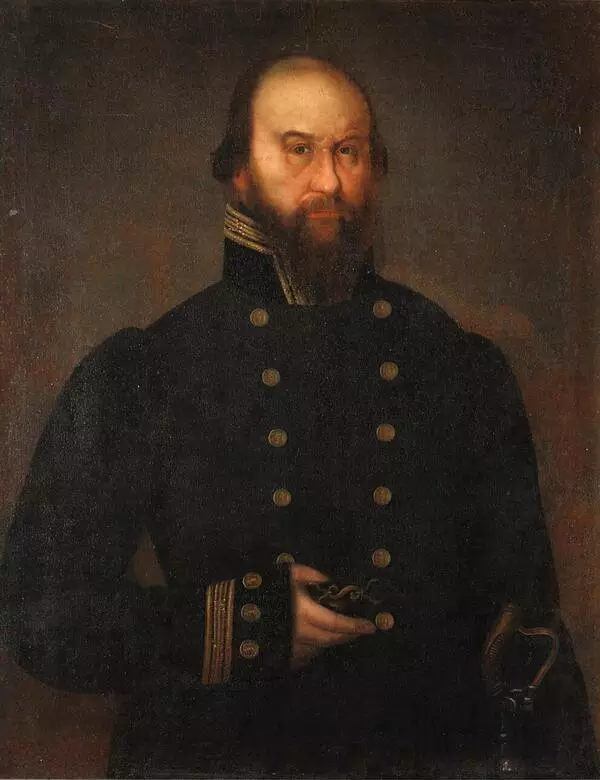The Uglich Museum houses a paired portrait of Praskovya Mikhailovna Shaposhnikova (née Zimina) painted by Ivan Vasilyevich Tarkhanov, the son of an Uglich priest.
Praskovya Zimina married Semyon Grigoryevich Shaposhnikov in May 1816. It was her first marriage and Semyon’s third one. They got married in the Church of St. Nicholas “at the Rooster Rock”, with the ceremony performed by Father Vasily (Tarkhanov). It is hard to say why Mikhail Zimin, a 2nd-guild merchant and mayor who traded “in both capitals” and owned textile factories, gave his daughter in marriage to the twice-widowed Shaposhnikov, but, fortunately, their marriage turned out to be a happy one. They lived a long life and died the same year: Semyon died in late January 1867, and Praskovya — in the middle of March.
When this portrait was painted, Praskovya was in the prime of her life, and the couple had a large house full of children. Less than two weeks after the portrait was finished, Praskovya gave birth to her ninth child — Katerina. In the manner typical of provincial regions, the clothes of the sitter combine traditional and fashionable characteristics. Her dress was made “according to a new style” with a pearl necklace covering a low neckline, which had been considered improper in the uyezd city until shortly before. The headband does not cover her hair entirely, the knot is decorated with a broach, and on her fingers, she has rings with gleaming gemstones. The painter seems to be counting the pearls and turning the expensive earrings to the viewer. The woman obviously takes pride in her large white shawl with wide ornamented edges.
The triumphant march of the Eastern shawl across Europe began in the late 18th century and brought the accessory to Russia. The fashion that came from France and complemented the Empire dresses of noble women was not met with opposition in the conservative province: various kerchiefs and veils had always been included in traditional clothing. While gentlewomen kept looking for new ways to use shawls (decorating them with cardboard draping or wearing them as a turban) and even danced with this eye-catching accessory, in the province, women preferred to wear shawls by carefully spreading them, demonstrating their pattern and high quality.
The children of the Shaposhnikovs welcomed the 20th century in and grew up to become cheerful and energetic people. Nowadays, their descendants live across the world.
Praskovya Zimina married Semyon Grigoryevich Shaposhnikov in May 1816. It was her first marriage and Semyon’s third one. They got married in the Church of St. Nicholas “at the Rooster Rock”, with the ceremony performed by Father Vasily (Tarkhanov). It is hard to say why Mikhail Zimin, a 2nd-guild merchant and mayor who traded “in both capitals” and owned textile factories, gave his daughter in marriage to the twice-widowed Shaposhnikov, but, fortunately, their marriage turned out to be a happy one. They lived a long life and died the same year: Semyon died in late January 1867, and Praskovya — in the middle of March.
When this portrait was painted, Praskovya was in the prime of her life, and the couple had a large house full of children. Less than two weeks after the portrait was finished, Praskovya gave birth to her ninth child — Katerina. In the manner typical of provincial regions, the clothes of the sitter combine traditional and fashionable characteristics. Her dress was made “according to a new style” with a pearl necklace covering a low neckline, which had been considered improper in the uyezd city until shortly before. The headband does not cover her hair entirely, the knot is decorated with a broach, and on her fingers, she has rings with gleaming gemstones. The painter seems to be counting the pearls and turning the expensive earrings to the viewer. The woman obviously takes pride in her large white shawl with wide ornamented edges.
The triumphant march of the Eastern shawl across Europe began in the late 18th century and brought the accessory to Russia. The fashion that came from France and complemented the Empire dresses of noble women was not met with opposition in the conservative province: various kerchiefs and veils had always been included in traditional clothing. While gentlewomen kept looking for new ways to use shawls (decorating them with cardboard draping or wearing them as a turban) and even danced with this eye-catching accessory, in the province, women preferred to wear shawls by carefully spreading them, demonstrating their pattern and high quality.
The children of the Shaposhnikovs welcomed the 20th century in and grew up to become cheerful and energetic people. Nowadays, their descendants live across the world.
